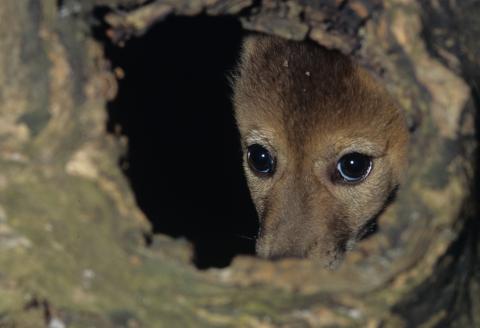Coyotes have a very flexible life history. Having such a broad geographic range across the United States, it makes sense that their biology would vary depending on the region's ecosystem and resources. Since coyotes are relatively new to Ohio, only becoming common across the state in the last 50 years, there has been little research on their population dynamics in this area.
Mature coyotes form a mated pair, and that pair will remain together until one or both of them dies. A mated pair of coyotes will breed every year, having a litter of pups each spring in April-May. Previous studies have found litters typically numbering 4-8 pups (Knowlton et al., 1999). These pups are confined to their dens for about the first six weeks of life and then start to venture out. At only a few months old, young coyotes will start hunting and traveling alone or with their siblings. Young coyotes either disperse to find their own territories in the fall/winter, or stay in their parents' territory and help raise the next year's litter.
Coyotes are very adaptable and have been shown to have different reproductive rates, both in litter sizes and age that a female first begins having litters, depending on a region's hunting pressure, food availability, and other stressors. This contributes to the difficulty that wildlife managers have had in controlling or eradicating coyotes from an area.

